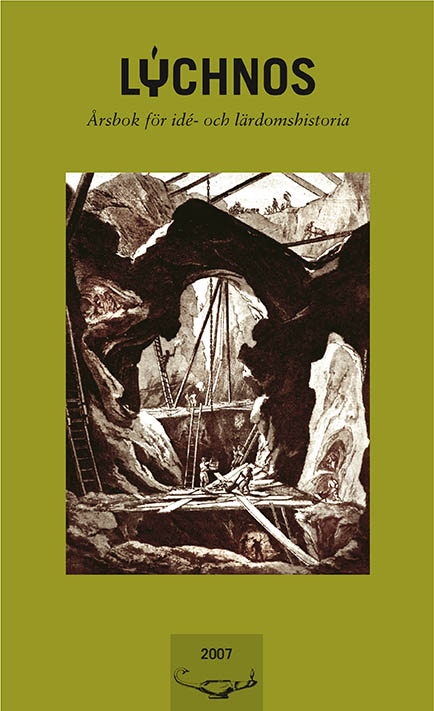Kemi, paracelsism och mekanisk filosofi
Bergskollegium och Uppsala cirka 1680–1770
Abstract
The paper attempts to thoroughly revise the traditional view of Swedish chemistry prior to the 1770s. Emphasis is laid on the two central nodes of the Swedish chemical and mineralogical tradition: the state Board of Mines and Uppsala University. It is argued that chemists like Georg Brandt and others broke with the earlier paracelsian chymistry at the Board, represented by Urban Hiärne. Instead, they looked to cartesian mechanist circles in Uppsala, and to the Dutch teacher of chemistry, Herman Boerhaave, for inspiration. Boerhaave's chemistry was also the point of departure for Johan Gottschalk Wallerius, Swedens first professor of chemistry (1750). Wallerius, although he pursued his own agenda, cooperated closely with the Board, while his successor Torbern Bergman took a somewhat different, more confrontational stance. The paper argues that the growth of a strong chemical tradition in Sweden can be seen as a consequence of an active interplay between the two environments. There was a steady flow of students from the university to the Board, and also an exchange of ideas and methods, both in chemistry, metallurgy and mineralogy, and on a more general level. The paper furthermore argues that the so called ”analytical concept of a chemical element” should be traced to the Board's chemists. It was used as a theoretical tool to define newly discovered substances cobalt and nickel in papers by Brandt and Axel Fredrik Cronstedt, as well as in the chemical investigation of platinum by Henric Teophil Scheffer.
Downloads
Publicerad
Nummer
Sektion
Licens
This work is licensed under a Creative Commons Attribution 4.0 International License. The copyright for the work published in Lychnos remains with the authors.


